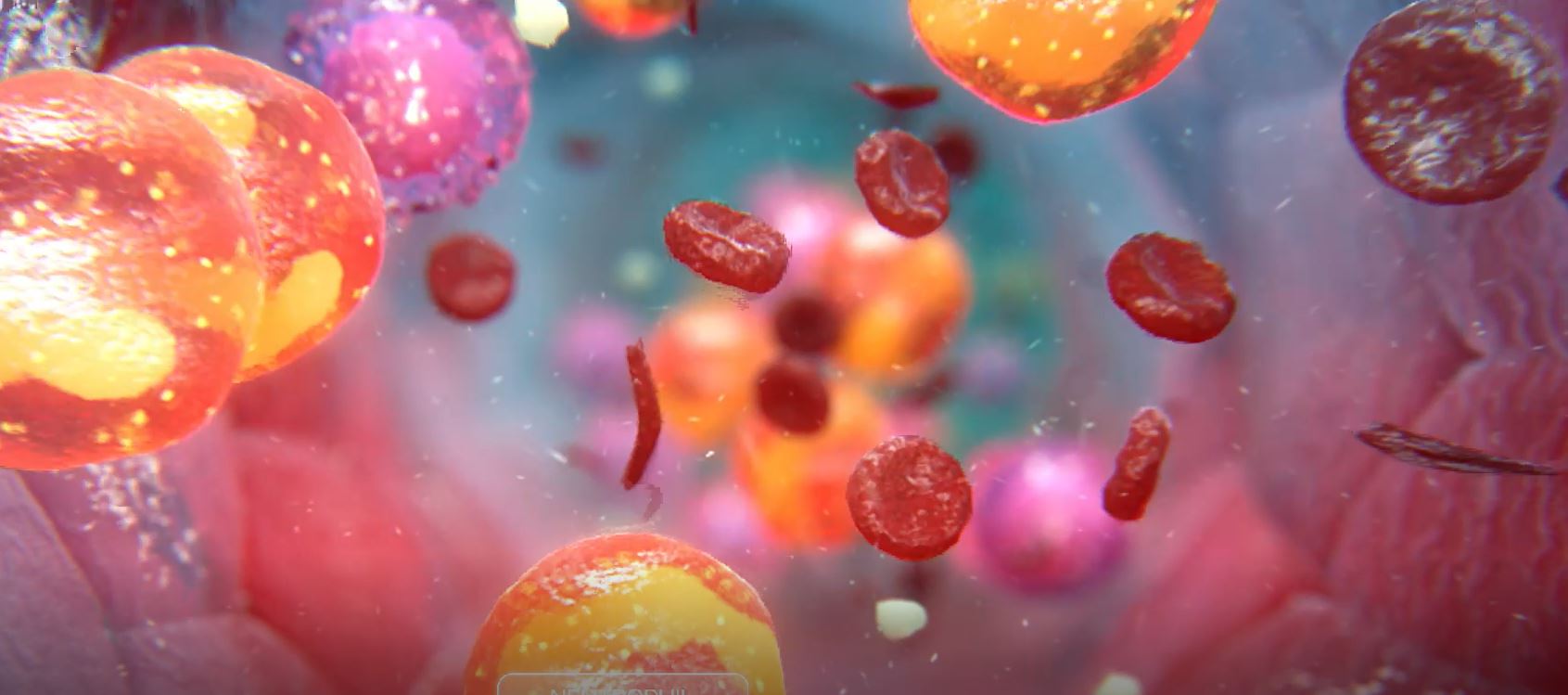Get full access with a free account
Benefits of the Coloplast® Professional Educational platform
![]() Full access to educational content, events and resources
Full access to educational content, events and resources
![]() Track your progress
Track your progress
![]() Share content with your colleagues
Share content with your colleagues
![]() Share supporting material with your patient
Share supporting material with your patient
Understanding exudate and the 'gap'
What is the ‘gap’?
The gap is the space between the wound bed and the dressing. It’s also called the ‘dead space’.1, 2 However, the space between the wound bed and the dressing is far from ‘dead’.
Let’s see why that is.
All wounds have unique, irregular topographies, or shapes.3, 4 Some wounds have steep angles between the edge of the wound and the wound bed. This can create cavities where fluid – or exudate – can accumulate. To find out how this might affect wound healing, we need to take a closer look at exudate.
What is exudate?
Perhaps you know it as ‘ooze’, ‘wound fluid’, ‘wound drainage’, ‘pus’ or ‘secretion’. All of these names refer to the fluid a wound creates when it’s healing. In this section, we use the term, exudate.
All wounds have exudate. This fluid is usually clear. It has a pale amber colour and a watery consistency. Wound exudate plays an essential role in the healing process.6
Why exudate can stop wound healing
While exudate is essential to the healing process, it can also stop a wound from healing.
This can happen if:
- the wound has the wrong amount of exudate (either too much, or too little);
- the exudate is the wrong composition; or
- the exudate is in the wrong place.8, 7
How exudate impacts wound healing
Exudate facilitates the flow of vital healing factors and cells across the wound bed. It:
- promotes cell growth;
- provides nutrients for cell metabolism; and
- helps to destroy dead or damaged tissue (also known as autolysis).7
Exudate also helps keep the wound environment moist, which makes the wound heal faster. In fact, studies show that moist wounds heal two to three times faster than dry wounds.7
As a wound begins to heal, the amount of exudate it produces usually decreases. However, many chronic wounds can get stuck in the inflammatory healing stage where harmful bacteria might develop.
As a wound heals, the level of exudate it produces will decrease. However, if a wound get stuck in the inflammatory stage of healing, it will continue to produce moderate to high levels of exudate.1
In such cases, exudate can:
- obstruct healing;
- slow down or prevent cell growth;
- interfere with growth factor availability; and
- contain elevated levels of inflammatory mediators; e.g. platelets, neutrophils, monocytes /macrophages and mast cells.7
Why managing the gap is critical to prevent exudate pooling
When exudate accumulates in the gap between the wound bed and the dressing, it’s called exudate pooling. This is particularly a challenge in wounds with irregular topographies, cavities or pockets.9
Exudate can begin to pool when:
- the dressing doesn’t absorb the exudate properly;
- the volume of fluid is greater than the dressing can absorb; or
- the dressing conform closely enough to the wound bed.1
When pools of exudate form, bacteria can start to grow in the wound – which is what increases the risk of infection.3, 4, 10 And if the exudate leaks onto the wound edge and surrounding, or periwound, skin, the skin can become macerated. All of this delays the healing process.11, 12, 13, 14,
Exudate pooling not only affects the healing process; it can also have a significant impact on a patient’s overall quality of life. Having exudate that leaks or smells is obviously very uncomfortable for the patient. They might have to change their dressings more frequently, which interrupts their daily routines; worse case, they might stop going out because they feel embarrassed.7
So, by managing the gap, you can make sure that the wound has the right level of moisture and exudate, which will support the healing process, and improve your patient’s overall well-being.
References
View references
- Dowsett C et al. A focus on the Triangle of Wound Assessment – addressing the gap challenge and identifying suspected biofilm in clinical practice. Wounds International 2019:10 (3)
- Keast, David H. et al. Managing the gap to promote healing in chronic wounds – an international consensus. Wounds International 2020. Vol 11, issue 3
- Snyder RJ. Managing dead space: an overview. Podiatry Management. October 2005.
- Cutting K et al. Topical silver-impregnated dressings and the importance of the dressing technology. 2009 The Authors. Journal Compilation © 2009 Blackwell Publishing Ltd and Medicalhelplines.com Inc, International Wound Journal, Vol 6 No 5
- Romanelli M, Vowden K, Weir D (2010) Exudate management made easy. Wounds International.
- Loyd Jones M (2014) Exudate: friend or foe? Br J Community Nurs (Suppl): S18–23
- World Union of Wound Healing Societies (WUWHS) Consensus Document. Wound exudate: effective assessment and management. Wounds International, 2019
- Moore Z, Strapp H (2015) Managing the problem of excess exudate. Br J Nurs 24(15): S12–7
- Dowsett et al. (2020). Closing the gap between the evidence and clinical practice – a consensus report on exudate management (11(3)) (def. exudate pooling)
- Waring M et al. An investigation into the conformability of wound dressings. Wounds uk, 2011, Vol 7, No 3
- Adderley UJ (2010) Managing wound exudate and promoting healing. Br J Community Nurs 15(3): S15–6, 18, 20. Doc. No. PM-02934
- Mouës CM, Heule F, Legerstee R, Hovius SE (2009) Five millennia of wound care products — what is new? A literature review. Ostomy Wound Manage 55(3):16–8, 20, 22 passim. Doc. No PM- 02932
- Sibbald G, Williamson D, Orsted H, Campbell K, Krasner D, Sibbald D (2000) Preparing the wound bed — debridement, bacterial balance, and moisture balance. Ostomy Wound Manage 46(11): 14–22, 24–8, 30–5; quiz 36–7. Doc. No PM-02935
- Haryanto H et al. Relationship between maceration and wound healing on diabetic foot ulcers in Indonesia: a prospective study. Int Wound J 2017; 14:516–522.
Other related content



